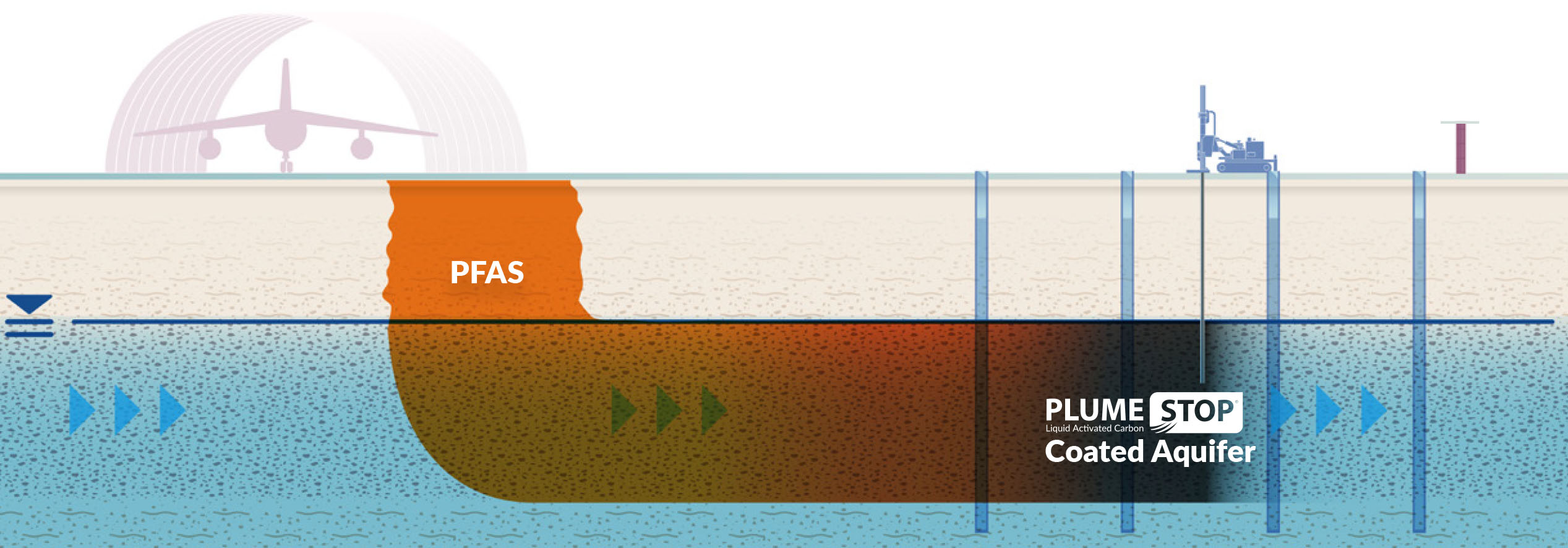The Complete Guide to PFAS Treatment for Water Contamination
The Complete Guide to PFAS Treatment for Water Contamination
Blog Article
Your Guide to PFAS Therapy Technologies and Perks
The prevalence of PFAS contamination in water sources requires an extensive understanding of offered therapy modern technologies. Each modern technology not only targets specific PFAS compounds but also plays an important duty in improving total water quality and safeguarding ecological stability.
Comprehending PFAS Contamination
Recognizing PFAS contamination is critical for resolving its prevalent effect on ecological and human health and wellness (m270 pfas treatment). Per- and polyfluoroalkyl materials (PFAS) are a group of synthetic chemicals extensively used in numerous commercial and customer products due to their water- and grease-resistant buildings. Frequently found in firefighting foams, non-stick kitchenware, and water-repellent fabrics, PFAS have actually gone into the environment through production processes, wastewater discharges, and leaching from garbage dumps
When launched, these compounds continue the environment, resulting in prevalent contamination of soil and water resources. Their distinct chemical structure, characterized by strong carbon-fluorine bonds, provides them resistant to degradation, leading to a sensation called "for life chemicals." PFAS can gather in the human body and the food chain, possibly causing damaging wellness effects, including immune system interruption, developing issues, and a boosted danger of certain cancers cells.
Governing firms and health and wellness organizations are increasingly identifying the relevance of PFAS contamination, motivating efforts to monitor, assess, and minimize its results. Understanding the paths of PFAS contamination is crucial for educating public law and developing reliable approaches to shield both environmental and human health.
Overview of Therapy Technologies
Different therapy technologies have been developed to attend to the challenges postured by PFAS contamination in water and soil. These modern technologies can be extensively identified right into numerous groups, each with its unique devices and effectiveness in removing PFAS compounds.
One famous technique is ion exchange, which makes use of material materials to record and remove PFAS from contaminated water. This technique is specifically efficient for short-chain PFAS and can achieve significant reductions in concentration levels. Another innovation, progressed oxidation processes (AOPs), uses solid oxidants and ultraviolet light to damage down PFAS into much less dangerous substances. AOPs are suitable for dealing with a vast array of PFAS substances but might need cautious optimization to optimize efficacy.

Turned On Carbon Filtration
Turned on carbon filtration is a widely made use of approach for the removal of PFAS from infected water, understood for its capacity to adsorb a wide series of natural substances. This innovation utilizes turned on carbon, a highly permeable product with a comprehensive surface, which facilitates the binding of PFAS molecules via physical adsorption. The efficiency of turned on carbon in eliminating PFAS is influenced by numerous aspects, consisting of the sort of carbon utilized, the contact time, and the concentration of PFAS in the water.
Among the benefits of triggered carbon filtration is its adaptability; it can be applied in various setups, such as granular turned on carbon (GAC) systems or powdered turned on carbon (SPECIAL-INTEREST GROUP) systems. GAC systems are generally employed in larger-scale applications, while PAC can be used in smaller sized or momentary arrangements. The technology check my site is fairly easy to run and maintain, making it obtainable for numerous water treatment facilities.

Ion Exchange Solution
Ion exchange systems stand for an additional effective strategy for the removal of PFAS from polluted water, matching techniques like activated carbon filtration. These systems run on the concept of trading ions in the water with ions held on a resin material. Ion exchange resins can be particularly created to target the negatively charged PFAS substances, successfully capturing them my sources and allowing cleaner water to go through.
Among the primary benefits of ion exchange systems is their ability to remove a vast array of PFAS, consisting of both long-chain and short-chain variants. This adaptability makes them suitable for different applications, varying from local water therapy to commercial processes. Additionally, ion exchange systems can frequently accomplish lower discovery restrictions for PFAS compared to a few other treatment methods, therefore enhancing water high quality.
However, it is vital to keep track of and handle the regeneration of ion exchange media, as the performance can decrease in time due to saturation. Appropriate maintenance and replacement of the resin are critical for maintaining the system's effectiveness. Generally, ion exchange systems give a trusted and reliable solution for PFAS removal, contributing dramatically to secure alcohol consumption water requirements and ecological protection.
Advanced Oxidation Processes
Advanced Oxidation Processes (AOPs) utilize effective oxidants to properly deteriorate PFAS substances in infected water. These innovative treatment techniques produce extremely responsive varieties, such as hydroxyl radicals, that can damage down complex PFAS molecules into much less damaging by-products. m270 pfas treatment. AOPs commonly use mixes of ultraviolet (UV) light, ozone, hydrogen peroxide, or Fenton's reagent, enhancing the oxidation possibility and enhancing deterioration performance
The primary advantage of AOPs depends on their capability to target a broad variety of PFAS substances, including both long-chain and short-chain variations. This flexibility is crucial, as PFAS contamination frequently includes blends of different substances with differing chemical structures. AOPs can be integrated right into existing water treatment systems, making them a useful service for numerous districts and markets.
Nevertheless, the application of AOPs can be resource-intensive, requiring cautious consideration link of operational costs and energy consumption. Additionally, while AOPs are effective in damaging down PFAS, they may not completely eliminate all byproducts, necessitating further therapy actions - m270 pfas treatment. On the whole, AOPs represent a promising method for attending to PFAS contamination, adding to cleaner water resources and improved public health and wellness defense

Verdict
By selecting the suitable modern technology, areas can enhance water quality, secure public health, and alleviate the ecological risks linked with PFAS exposure. Proceeded research and execution of these methods are important for effective administration of PFAS contamination in impacted locations.
Report this page